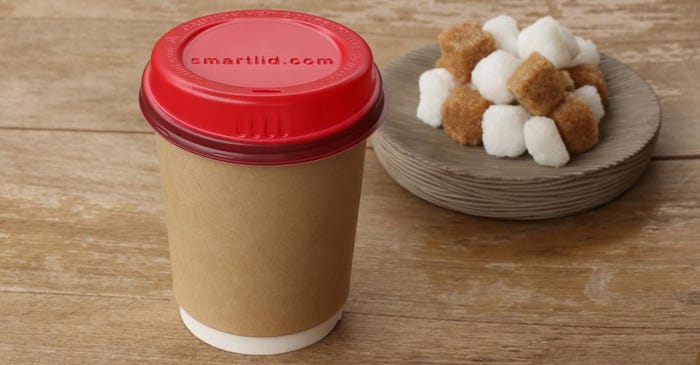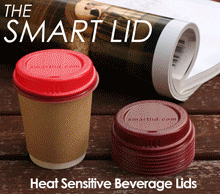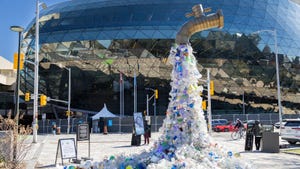Heat sensitive coffee lids provide red warning
Even though it's been 20 years since McDonald's was sued over hot coffee burns, the memory of the lawsuit still linger in many people's mind. Whether you believe the lawsuit was justified or look at it as a citizen taking advantage of the American legal system, the reality is that coffee accidents still happen. Each year in the U.S., about 150,000 hot liquid scald cases require medical treatment, according to the American Burn Association. Hot liquid scalds continue to affect the three high-risk groups: young children, older adults and people with special needs.
January 23, 2014
Even though it's been 20 years since McDonald's was sued over hot coffee burns, the memory of the lawsuit still linger in many people's mind. Whether you believe the lawsuit was justified or look at it as a citizen taking advantage of the American legal system, the reality is that coffee accidents still happen. Each year in the U.S., about 150,000 hot liquid scald cases require medical treatment, according to the American Burn Association. Hot liquid scalds continue to affect the three high-risk groups: young children, older adults and people with special needs.
The risk of hot coffee scalds is something that has bothered the owner of several cafes in Sydney, Australia. About 12 years ago, the Bayss family decided that they wanted to help customers avoid any hot surprises while, at the same time, reinvent coffee packaging.
 "This dream ignited the passion for a better designed coffee lid, one that turned bright red as heat was applied, and one which returned to the cold color as your drink cooled," Anthony Bayss, director at Smart Lid Systems told PlasticsToday. "Everyone we spoke to in the industry said we were trying to design a product that was technically not possible."
"This dream ignited the passion for a better designed coffee lid, one that turned bright red as heat was applied, and one which returned to the cold color as your drink cooled," Anthony Bayss, director at Smart Lid Systems told PlasticsToday. "Everyone we spoke to in the industry said we were trying to design a product that was technically not possible."
But after years of research and countless prototypes, Bayss said they were able to develop a coffee lid that made all coffee drinkers say, "wow." Eventually the family won the technical and production backing of Australia's largest coffee lid manufacturer, RemaPak and the Smart Lid solution was born.
Materials and how it works
Bayss said that when it came to the product material, they wanted to ensure that the material used matched the current, popular coffee lid substrate, high impact polystyrene (HIPS) While the Smart Lid is made of the standard food-grade plastic type, HIPS, they add a thermochromic masterbatch during the production process.
The key differentiator is when the Smart Lid is introduced to a hot beverage with a temperature above 48 Celsius (118 Fahrenheit), the heat changes the electron state and certain colors become visible, in the case of a hot temperature, it turns red.
"Red is the color known internationally as a 'warning' sign," Bayss said. "We see the Smart Lid as a warning indicator and creating a level of awareness. Our innovation is based around the use of the specialty plastic in very thin plastic, this has never been achieved before with such a good color contrast between the cold and hot colors."
The company eventually received direct food-contact compliance and was granted patents. Bayss said that along the way, Smart Lid has won eight international awards for innovation and design.
The Smart Lid is available commercially in Australia, and sold to cafes all over the country.
But Smart Lid wasn't just designed for Australians. The family wants to bring it to the U.S. market as well and has launched an Indiegogo campaign to help them achieve this.
"Indiegogo was born from frustration," Bayss said. "Every day we are getting emails from all parts of the world asking about the Smart Lid, not just from cafes and packaging distributors, but from coffee drinkers who want to be able to purchase the lid. A successfully funded Indiegogo project will allow us to bring the Smart Lid direct to consumers through centralized U.S.-based distribution."
Bayss believes that there will always be a need for prevention methods such as the Smart Lid.
"The industries for the Smart Lid are huge markets: direct to cafes worldwide, wholesale to packaging distributors, coffee roasters and chains," he said. "Then there is the healthcare industry for both hospitals and aged care facilities. And finally the retail market - selling packs direct to consumers and through retail chains."
|
Animated GIF showcases how Smart Lid works. |
About the Author(s)
You May Also Like



